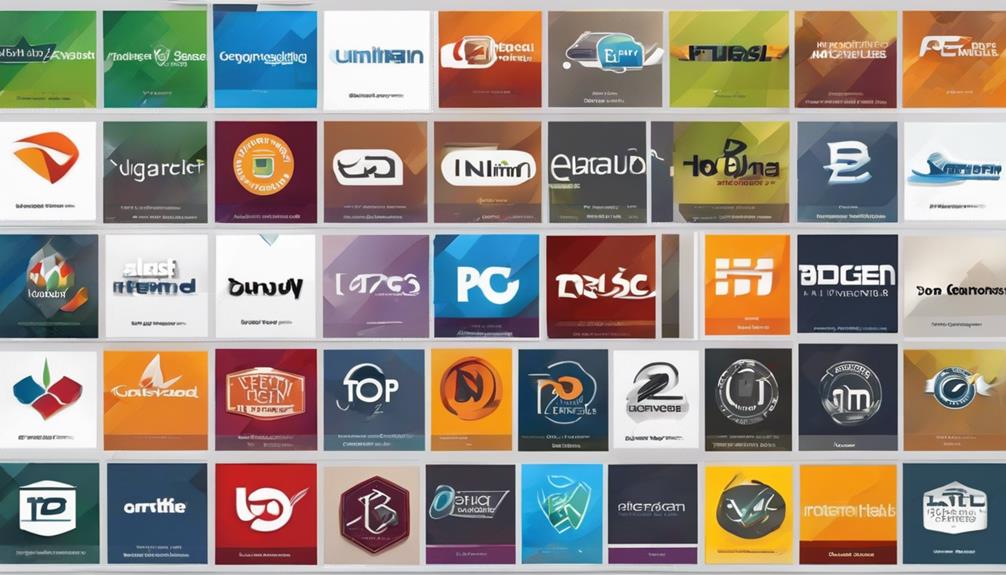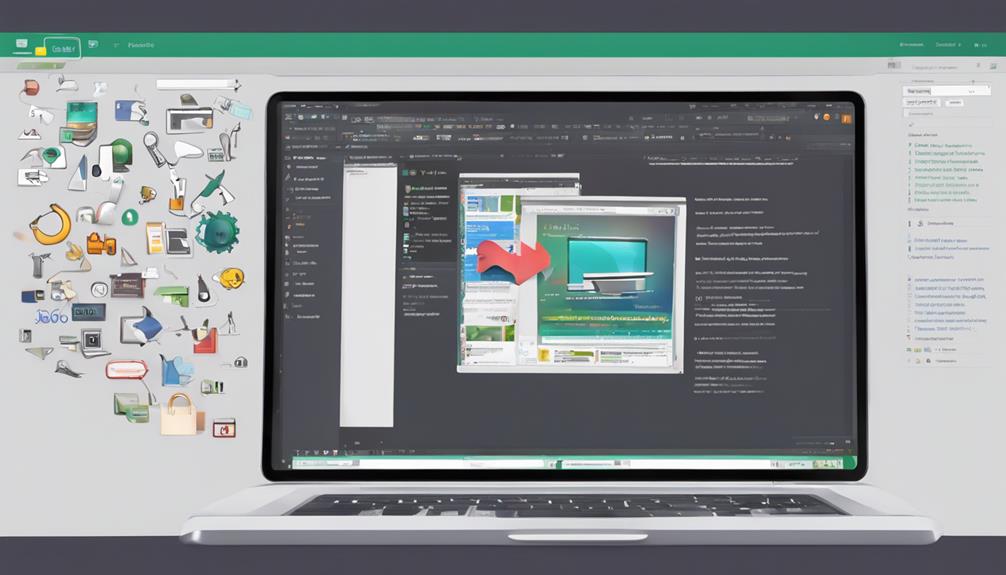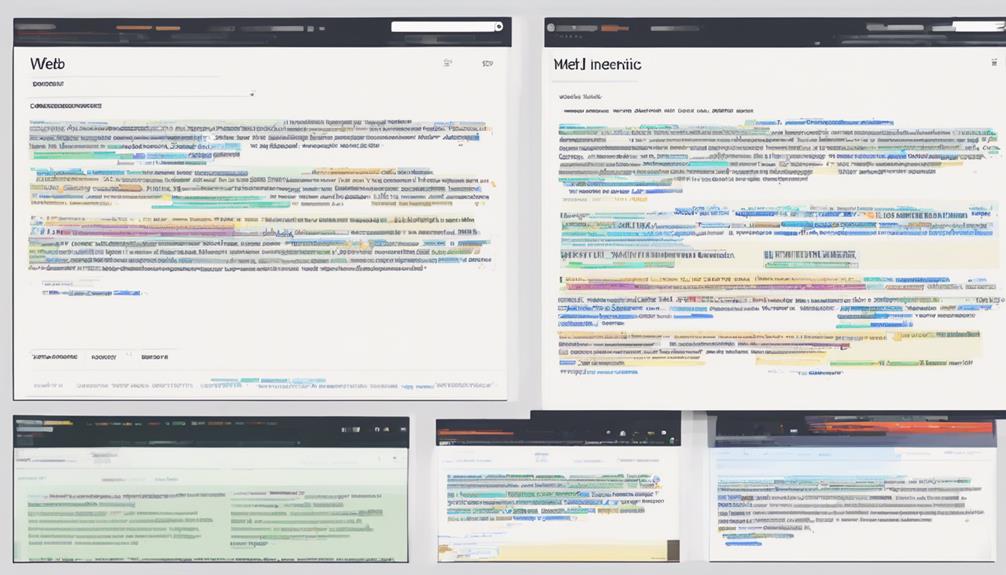Have you ever wondered which are the popular file formats for HTML conversion? From widely used formats like PDF and Word to image formats like JPEG and PNG, the realm of HTML conversion encompasses various file types essential for online content. Understanding the nuances of these conversions can significantly impact the presentation and accessibility of your digital assets. Explore the intricacies of these top 10 formats to discover how they seamlessly transition into the web environment, enhancing user experience and content versatility.
PDF Conversion
When it comes to converting documents for easy sharing and viewing, PDF conversion is a widely used format. PDF offers numerous benefits such as maintaining document formatting across different devices, making it a popular choice for businesses and individuals alike. PDF editing tools allow for easy manipulation of text, images, and other elements within the document, enhancing flexibility and customization.
In terms of security features, PDFs provide options for password protection, digital signatures, and encryption to safeguard sensitive information. These features ensure that only authorized individuals can access and modify the document, adding an extra layer of security to your files.
PDF compression techniques are essential for reducing file size while maintaining document quality. Compression helps in faster document sharing, lowers storage requirements, and improves overall efficiency. By optimizing the size of PDF files, users can send and receive documents more quickly, saving both time and resources.
Word Conversion
For efficient document conversion that retains formatting and allows for easy editing, Word conversion is a reliable option. When converting Word documents, you may need to switch between formats like word to pdf conversion or word to excel conversion. These conversions are commonly used for sharing and editing purposes.
On the other hand, if you receive a PDF file and need to make edits, you can opt for pdf to word conversion. This process transforms the PDF content into an editable Word document, allowing you to modify the text, images, and layout. Similarly, if you want to convert a PDF file into an image format, you can choose pdf to jpeg conversion. This conversion is handy when you need to extract images from a PDF document.
Whether you are converting Word files to different formats or transforming PDFs into editable documents or images, Word conversion tools offer flexibility and efficiency in managing your digital content.
Excel Conversion
To efficiently handle data conversions while preserving formatting and enabling seamless editing, Excel conversion proves to be a valuable tool. When converting to Excel, you open up a realm of possibilities for data manipulation and formatting options. Excel’s robust features allow for easy organization, analysis, and presentation of data.
With Excel, you can manipulate data in various ways, including sorting, filtering, and performing calculations. This flexibility enables you to tailor the data to suit your specific needs. Additionally, Excel offers a wide range of formatting options such as cell coloring, borders, and font styles. These formatting features help enhance the visual appeal of the data and make it easier to interpret.
Whether you are converting documents, tables, or reports, Excel conversion streamlines the process and ensures that your data remains structured and accessible. By utilizing Excel’s data manipulation and formatting capabilities, you can effectively manage and present information in a clear and organized manner.
JPEG Conversion
When converting to JPEG format, consider factors like image quality and compression levels to achieve the desired balance between file size and visual clarity. Understanding the benefits of using JPEG, such as widespread compatibility and efficient storage, can help you make informed decisions when converting files. By optimizing these quality factors and recognizing the advantages of JPEG, you can effectively tailor your conversion process to suit your specific needs.
JPEG Quality Factors
Amidst the plethora of image formats available, the JPEG format stands out for its efficient compression capabilities. When converting images to JPEG, understanding quality factors is crucial for image compression and optimization. JPEG quality factors determine the balance between image quality and file size.
The quality factor ranges from 0 to 100, with 0 being the lowest quality and smallest file size, while 100 represents the highest quality and largest file size. Adjusting this factor allows you to optimize images based on specific requirements. Lower quality factors result in more aggressive compression, reducing image quality but creating smaller file sizes suitable for web use. Higher quality factors preserve image details but lead to larger file sizes, ideal for printing or high-resolution displays.
Benefits of JPEG
Leveraging the JPEG format for image conversion offers a multitude of benefits, making it a preferred choice for various digital applications. JPEG excels in image compression, reducing file sizes while preserving quality. This balance between file size reduction and quality preservation is crucial for websites and digital media where fast loading times are essential.
One of the key advantages of JPEG is its lossless compression capability, allowing images to be compressed without sacrificing quality. This makes it ideal for scenarios where high-quality visuals are required but storage space needs to be optimized. By efficiently compressing images, JPEG files are easier to store, share, and display on websites without compromising the overall visual experience.
PNG Conversion
For efficient and high-quality image conversions, utilizing PNG format can be a pivotal choice. PNG, which stands for Portable Network Graphics, is a popular format due to its lossless compression capabilities. When converting images to PNG, you benefit from excellent image quality without sacrificing file size reduction. The format supports transparency and is ideal for images with text, line art, and graphics with sharp edges, making it a preferred choice for web graphics.
PNG’s image compression abilities ensure that even after conversions, the image quality remains top-notch. This lossless compression means that no data is lost during the conversion process, resulting in crisp and clear images. Additionally, PNG supports a wide range of colors, making it suitable for various types of images.
TIFF Conversion
When it comes to TIFF conversion, you’ll find that it offers various advantages, particularly in maintaining high image quality and supporting multiple layers. To facilitate this process, there are numerous tools available that can seamlessly convert TIFF files to other formats or vice versa. Understanding these benefits and utilizing the right tools can streamline your HTML conversion workflow efficiently.
Advantages of TIFF
With its high-quality lossless compression and support for multiple layers and pages, TIFF (Tagged Image File Format) stands out as a reliable format for preserving image integrity and detail. TIFF compression techniques ensure that images retain their quality without sacrificing file size, making it ideal for archiving high-resolution images. When compared to PDF, TIFF files are more suited for images due to their ability to maintain image quality without compression artifacts. Additionally, TIFF editing tools are widely available, allowing users to manipulate images without losing quality. One key consideration when working with TIFF files is their larger file sizes compared to other formats, which may impact storage and transfer speed. Despite this, the benefits of using TIFF, such as lossless compression and support for multiple pages, make it a preferred choice for scenarios where image quality is paramount.
Tools for TIFF Conversion
When converting TIFF files, having access to reliable tools is crucial to maintain image quality and file integrity. When looking for tiff conversion software, it’s essential to consider factors like conversion speed, output quality, and supported formats. Conducting a tiff conversion software comparison can help you find the best tool for your needs.
Some popular tools for TIFF conversion include Adobe Acrobat Pro, ABBYY FineReader, and online converters like Zamzar and OnlineConvertFree. Each tool has its strengths and weaknesses, so it’s important to test them out before committing to one.
Here are some tiff conversion tips and tricks to ensure a smooth process: always make backups of your original files before conversion, adjust the DPI settings to meet your requirements, and consider batch processing for efficiency.
EPUB Conversion
Consider EPUB conversion as a crucial step in making your content accessible to a wide range of e-readers and devices. When it comes to EPUB editing, tools like Sigil and Calibre provide robust options for refining your e-book’s layout and structure. EPUB formatting allows for a responsive design that adapts to different screen sizes, unlike PDFs which have fixed layouts. EPUB distribution is simplified through platforms like Amazon Kindle Direct Publishing and Smashwords, enabling you to reach a broader audience easily.
EPUB offers advantages over PDF in terms of readability and user experience, making it a preferred choice for digital publishing. By converting your content to EPUB format, you ensure compatibility with various e-reader devices and apps, enhancing accessibility for your audience. Make the most of EPUB conversion by optimizing your e-books for seamless distribution and engaging reader experiences.
MOBI Conversion
For seamless compatibility with Amazon Kindle devices and apps, MOBI conversion plays a pivotal role in optimizing your e-books for a wider audience. When converting your HTML files to MOBI format, consider the following key points:
- MOBI File Types: Ensure your content is correctly formatted to meet the specifications of MOBI files, allowing for a smooth reading experience on Kindle devices.
- Ebook Compatibility: By converting to MOBI, you enhance the compatibility of your e-books with Kindle e-readers and apps, reaching a broader audience of readers.
- MOBI Conversion Tools: Utilize efficient MOBI conversion tools like Calibre or KindleGen to streamline the conversion process and generate high-quality MOBI files.
- Conversion Speed: Opt for tools that offer fast conversion speeds, enabling you to convert your HTML content to MOBI swiftly and efficiently.
- Quality Assurance: Before publishing, perform thorough checks to ensure that the converted MOBI files maintain the integrity of your original content.
RTF Conversion
To efficiently convert your documents to RTF format, employing the right tools and techniques is essential. When looking to convert RTF to PDF or vice versa, utilizing specialized RTF conversion tools can streamline the process. These tools often offer features like batch processing, customizable settings, and accurate formatting preservation.
For converting RTF to Word, consider using reliable RTF conversion software that ensures a smooth transition between the two formats. Such software typically allows users to retain original document styles, images, and other elements during the conversion process.
Selecting the appropriate RTF conversion tools and software based on your specific needs can significantly impact the quality and efficiency of the conversion process. Whether you are working with extensive document libraries or individual files, finding tools that support your requirements is crucial for a successful RTF conversion experience.
TXT Conversion
When converting HTML to TXT, you’ll find several benefits worth considering. TXT files are simple, lightweight, and compatible with a wide range of devices and platforms. Various tools are available to facilitate the conversion process efficiently.
Benefits of TXT Conversion
Converting files to TXT format offers a streamlined approach for data preservation and sharing. TXT Conversion provides several benefits that enhance efficiency and accessibility:
- Text Analysis: TXT files allow for easy text analysis due to their simple structure, making it convenient to extract and process textual data efficiently.
- OCR Technology Compatibility: TXT format is compatible with Optical Character Recognition (OCR) technology, enabling scanned documents to be converted into editable and searchable text.
- Platform Agnosticism: TXT files can be opened on any device or operating system without compatibility issues, ensuring seamless sharing and accessibility.
- Storage Efficiency: TXT files are lightweight and take up minimal storage space, making them ideal for archiving large volumes of text-based information.
- Long-Term Preservation: TXT format is a standard for long-term data preservation, ensuring that the content remains accessible and unaltered over time.
Tools for TXT Conversion
Looking to convert your files to TXT format efficiently? When it comes to tools for TXT conversion, there are several options available that can streamline the process for you. These tools not only convert your files to TXT format but also offer additional features such as text analysis and support for e-book creation.
For text analysis, tools like Calibre and Pandoc are widely used and highly effective. They allow you to convert various file formats to TXT while also offering functionalities for analyzing and manipulating the text within the files. This can be particularly useful for researchers, writers, and anyone working with large amounts of textual data.
In terms of e-book creation, tools like Sigil and Jutoh provide comprehensive support for converting files to TXT and creating e-books in various formats. These tools offer user-friendly interfaces and robust features to help you easily convert your files to TXT and design professional-looking e-books. Whether you need to convert documents for analysis or create e-books, these tools can help simplify the process for you.
Frequently Asked Questions
Can HTML Files Be Easily Customized After Conversion?
Yes, you can easily customize HTML files post-conversion. Customization options are abundant, allowing you to tailor content to your needs. The user-friendly interface simplifies the process, enabling effortless modifications for a personalized touch.
Are There Limitations on File Size for HTML Conversion?
When converting to HTML, file size limitations can exist, affecting the customization options. Ensure files meet size requirements for a smooth conversion process. Be mindful of constraints to maintain flexibility in customization post-conversion.
Can Hyperlinks and Images Be Preserved in HTML Conversion?
Yes, when converting, hyperlinks and images can be preserved in HTML. Ensure that formatting options are maintained for a seamless transition. Watch out for compatibility issues with certain file types that may impact the conversion process.
Is It Possible to Convert HTML Back to Its Original Format?
You can convert HTML back to its original format effortlessly. HTML preservation and format accuracy are maintained throughout the process. Enjoy a seamless transition from HTML to its initial form, ensuring content integrity and visual consistency.
Are There Differences in the Quality of HTML Conversion Tools?
When comparing HTML conversion tools, focus on conversion accuracy and user-friendly interface. Different tools vary in quality. Ensure the tool you choose meets your needs for accurate conversion and an intuitive interface for seamless usability.



